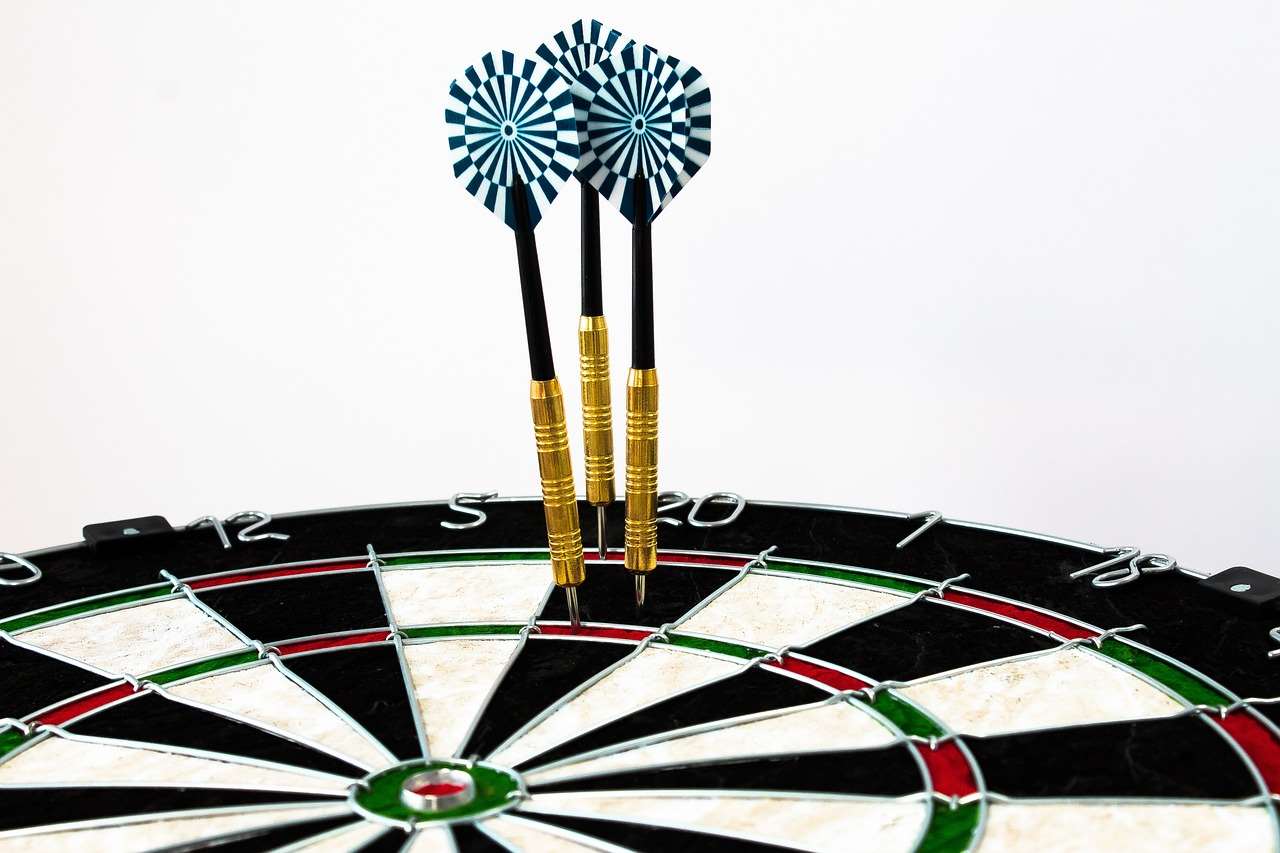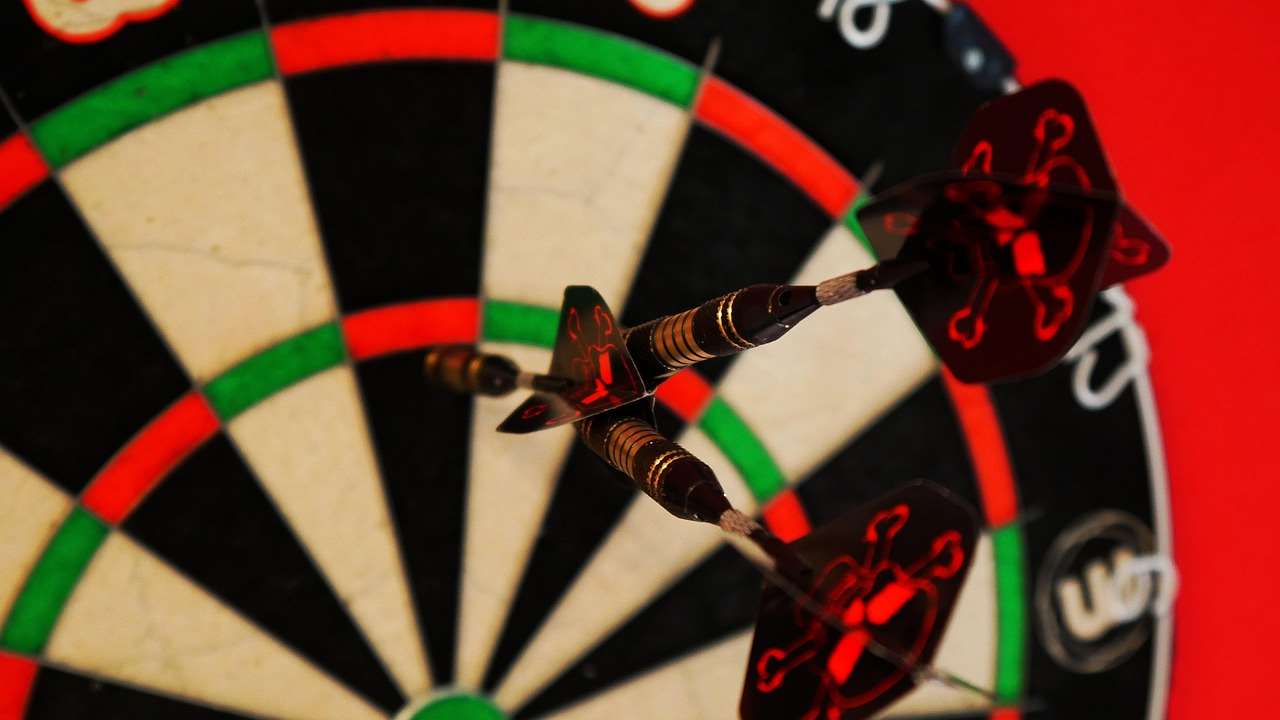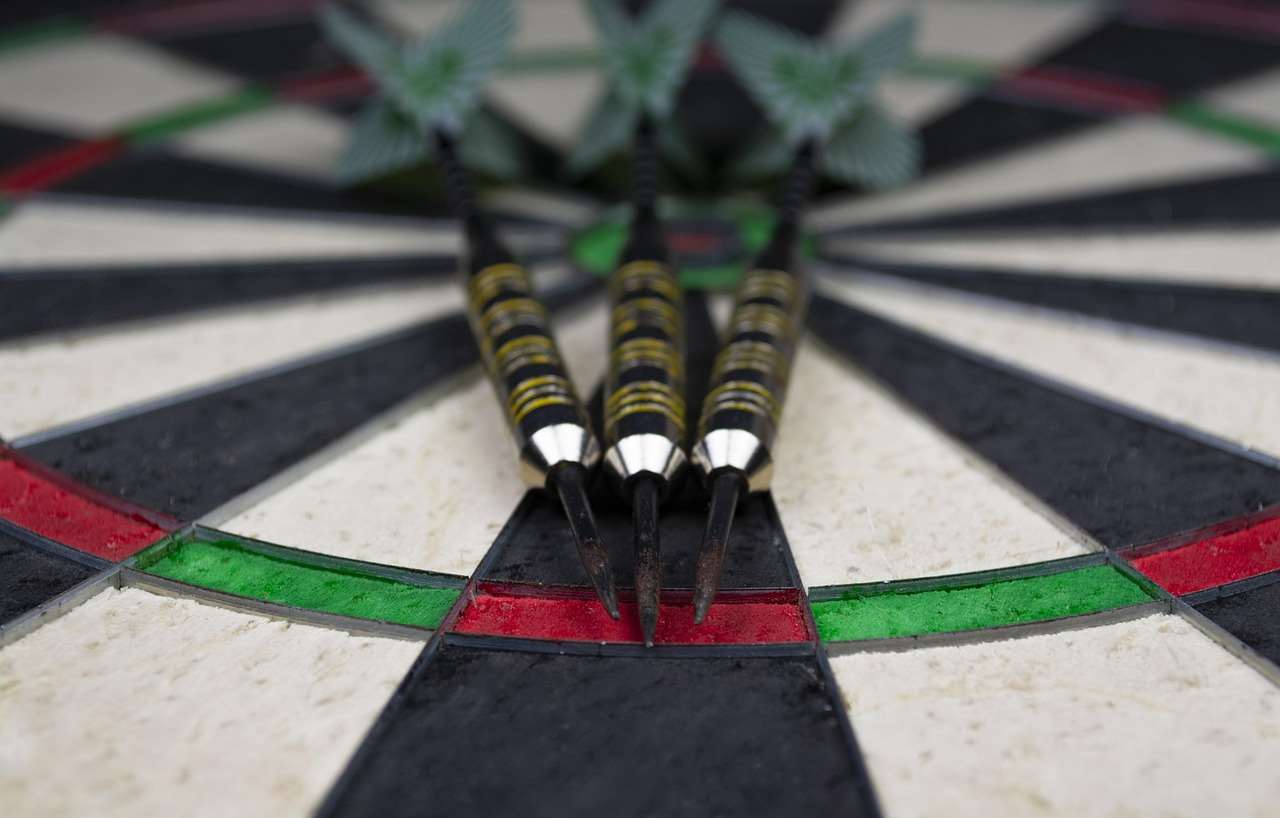Mastering the throw darts technique is all about consistency and control, and achieving that starts with understanding the fundamentals. This article will guide you through every aspect of the perfect throw, from stance and grip to the release and follow-through, ensuring you improve your accuracy and consistency at the oche.
⚠️ Still Using Pen & Paper (or a Chalkboard)?! ⚠️
Step into the future! The Dart Counter App handles all the scoring, suggests checkouts, and tracks your stats automatically. It's easier than you think!
Try the Smart Dart Counter App FREE!Ready for an upgrade? Click above!
The Foundation: Stance and Balance
Your stance is the bedrock of your throw darts technique. It provides the stability and balance necessary for a consistent and repeatable motion. A well-balanced stance minimizes unnecessary movement, allowing you to focus solely on the throw itself.
Finding Your Ideal Stance
There isn’t a single “correct” stance, but there are general principles to follow:
- The Angle: Most players prefer a slightly angled stance, with their dominant foot pointing towards the board. This typically involves standing at roughly a 45-degree angle to the oche. This allows for a more natural throwing motion and better visibility of the target.
- Foot Placement: Experiment with different foot placements. Some players prefer both feet on the ground, while others lift their non-dominant foot slightly for balance. Find what feels most comfortable and stable for you.
- Weight Distribution: Maintain a balanced weight distribution. You shouldn’t be leaning too far forward or backward. Your weight should be centered over your feet.
Proper balance ensures that your body remains stable throughout the throwing motion, contributing to a more accurate and consistent throw. Consider using a laser to align your stance properly.

Grip: The Key to Control
The grip is how you connect with the dart, and it directly influences your control and accuracy. Finding the right grip is crucial for developing a reliable throw darts technique.
Experimenting with Different Grips
There are numerous grip styles, each with its own advantages and disadvantages. Here are a few common examples:
- The Light Grip: Holding the dart loosely allows for a smoother release and reduces tension in the arm. This grip is favored by players who prioritize finesse and feel.
- The Firm Grip: A firmer grip provides more control over the dart but can also lead to tension and reduced fluidity. This grip is often preferred by players who like to feel in control of every aspect of the throw.
- The Pencil Grip: Holding the dart like a pencil, with the thumb and forefinger primarily responsible for control. This grip is simple and natural for many players.
- The Point Grip: Gripping the dart closer to the point can provide more stability, especially for players who struggle with wobble.
Grip Pressure and Consistency
Regardless of the grip style you choose, consistent grip pressure is paramount. Avoid squeezing the dart too tightly, as this can induce tension and affect your release. Practice maintaining a consistent level of pressure throughout your throw. If you are interested in improving your darts game, check out the Best darts scoring app.

The Throwing Motion: From Drawback to Release
The throwing motion is the heart of your throw darts technique. It’s a fluid, coordinated movement that propels the dart towards the target. A smooth and consistent throwing motion is essential for accuracy and repeatability.
The Drawback
The drawback is the first part of the throwing motion, where you bring the dart back towards your face. The drawback serves several purposes:
- Aiming: The drawback allows you to align the dart with your target and fine-tune your aim.
- Building Momentum: The drawback helps build momentum for the forward throw.
- Consistency: A consistent drawback ensures that you’re starting your throw from the same position every time.
During the drawback, keep your elbow elevated and your wrist firm. Avoid any unnecessary movements or wobbles.
The Forward Throw
The forward throw is the explosive part of the motion where you release the dart. It should be a smooth and controlled acceleration, starting from the elbow and extending through the wrist.
- Elbow Extension: Extend your elbow smoothly and deliberately towards the target.
- Wrist Snap: As your elbow reaches full extension, snap your wrist forward to impart spin on the dart. The amount of wrist snap will influence the dart’s trajectory.
- Release Point: Release the dart at the peak of your forward motion. The timing of the release is crucial for accuracy.
Release and Follow-Through
The release and follow-through are often overlooked, but they are essential for completing the throw darts technique. A proper follow-through helps maintain balance and ensures that you’re completing the throwing motion fully.
- Smooth Follow-Through: After releasing the dart, continue your arm motion towards the target. Avoid stopping abruptly.
- Maintain Balance: Keep your balance throughout the follow-through. Avoid swaying or shifting your weight.
- Visual Confirmation: Watch the dart as it travels towards the board. This helps you develop a feel for your throw and identify any inconsistencies.

Common Mistakes and How to Correct Them
Even with a solid understanding of the fundamentals, it’s easy to fall into bad habits. Identifying and correcting these common mistakes is crucial for improving your throw darts technique.
Inconsistent Stance
A variable stance leads to inconsistent throws. Ensure that you’re adopting the same stance every time. Use visual cues or markers on the floor to help you maintain consistency.
Tense Grip
A tight grip restricts movement and can lead to inaccuracy. Relax your grip and focus on maintaining a consistent pressure. Experiment with different grip styles to find one that feels comfortable and natural.
Jerky Motion
A jerky throwing motion introduces inconsistencies and reduces control. Focus on smoothing out your throw. Practice slowly and deliberately, paying attention to each phase of the motion.
Early Release
Releasing the dart too early can cause it to fly high. Focus on releasing the dart at the peak of your forward motion. Practice your timing until it becomes natural.
Incomplete Follow-Through
A short or abrupt follow-through can affect the dart’s trajectory. Ensure that you’re completing the throwing motion fully. Extend your arm towards the target and maintain your balance.

Practice Drills to Improve Your Throw Darts Technique
Consistent practice is the key to mastering any skill, and darts is no exception. Here are some effective practice drills to help you refine your throw darts technique.
Target Practice
Focus on specific targets to improve your accuracy. Start with the double 20 and then move on to other high-scoring areas, like the treble 20 and the bullseye. Regular practice will improve your dart accuracy.
Around the Clock
Throw at each number on the board in sequence, starting with 1 and ending with 20. This drill helps improve your overall accuracy and consistency.
Doubles and Trebles Practice
Focus specifically on hitting doubles and trebles. These are crucial for finishing legs and scoring big points. Consider dartboard veins when improving your strategy for specific outcomes.
Consistency Drills
Throw a series of darts at the same target, focusing solely on replicating your throwing motion. This helps build muscle memory and reinforces consistent habits. You can further your skills by understanding dart segment training.
Mental Preparation
Darts is as much a mental game as it is a physical one. Before each practice session, visualize yourself throwing accurately and consistently. This helps build confidence and reinforces positive habits. Furthermore, utilize the latest best darts scorer app to track your progress.

Equipment Matters: Choosing the Right Darts
While technique is paramount, the equipment you use can also impact your performance. Choosing the right darts can significantly improve your comfort, control, and accuracy.
Dart Weight
Darts come in a variety of weights, typically ranging from 18 to 30 grams. The ideal weight depends on your personal preference and throwing style. Experiment with different weights to find what feels most comfortable and controllable.
Dart Barrel
The barrel is the main body of the dart and comes in various shapes, sizes, and materials. Common materials include brass, nickel-silver, and tungsten. Tungsten darts are more expensive but offer a slimmer profile and higher density, allowing for tighter groupings. Consider darts fly on board to enhance your set up.
Dart Shafts and Flights
The shafts and flights affect the dart’s aerodynamics and trajectory. Experiment with different lengths and shapes to find what works best for your throwing style. Shorter shafts tend to fly straighter, while longer shafts provide more stability. Larger flights create more drag, slowing the dart down, while smaller flights offer less drag and faster speeds. When finding locations to play consider the darts match nottingham.
By paying attention to these factors and finding equipment that suits your individual needs, you can optimize your performance and take your throw darts technique to the next level.
Conclusion
Mastering the throw darts technique is a journey that requires dedication, practice, and a keen understanding of the fundamentals. By focusing on your stance, grip, throwing motion, and equipment, you can develop a consistent and accurate throw. Remember to identify and correct any common mistakes, and incorporate regular practice drills into your routine. Now, pick up those darts, put these tips into action, and watch your scores soar! Good luck, and happy throwing!
Hi, I’m Dieter, and I created Dartcounter (Dartcounterapp.com). My motivation wasn’t being a darts expert – quite the opposite! When I first started playing, I loved the game but found keeping accurate scores and tracking stats difficult and distracting.
I figured I couldn’t be the only one struggling with this. So, I decided to build a solution: an easy-to-use application that everyone, no matter their experience level, could use to manage scoring effortlessly.
My goal for Dartcounter was simple: let the app handle the numbers – the scoring, the averages, the stats, even checkout suggestions – so players could focus purely on their throw and enjoying the game. It began as a way to solve my own beginner’s problem, and I’m thrilled it has grown into a helpful tool for the wider darts community.